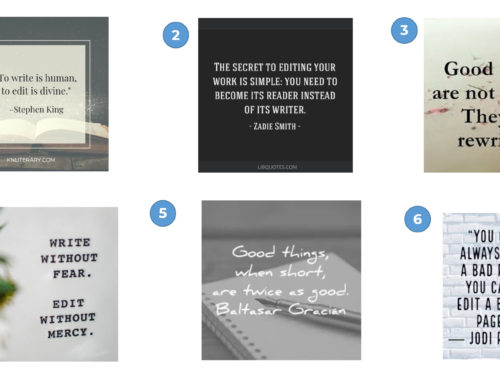When your nonprofit sends a press release to a reporter or editor, it’s immediately facing stiff competition for coverage.
Journalists can receive hundreds of releases each week — and depending on what they cover and who they work for, they only have time to cover a handful of stories.
With that in mind, you have to do your best to stand out from the crowd and provide them with something useful. Otherwise, your pitch is going to end up in their trash bins.
But, all too often, communicators punt on their releases.
They write flat headlines. They don’t provide context. They are out of touch with what reporters and editors are actually seeking.
Nonprofit communicators are often guilty of these press release sins. But they are not alone. As a former newspaper editor and reporter, I saw countless releases from Fortune 500 companies and big-money PR firms that left me shaking my head.
The good news is that you have an opportunity to stand out in this sea of mediocrity. You simply need to invest the time in making your release into something that provides reporters with the context and color they are looking for.
Recently, we discussed the importance of a strong nut graph — perhaps the most overlooked element of a well-crafted news release.
Today, we’re going to focus on another overlooked piece — the quote.
Most news releases include at least one quote from an official with the organization that is issuing the release.
The thinking behind including a quote is pretty simple. It gives the reporter a ready-made quote that he or she can include in a story if time is short or if they are unable to interview that official.
Quotes typically appear no earlier than the third paragraph of a release, often to give context to the news that the release is announcing.
A well-considered quote can be a great tool for your organization. It can help you sell the idea to the journalist that your announcement is newsworthy. It also gives you the chance to write a part of that reporter’s story. If he or she chooses to use the quote in your release, you’ve succeeded in essentially selecting a piece of what appears in the story.
As a reporter, I always appreciated releases that included strong, meaty quotes. A strong quote made my job easier and assured me that I’d have a quote to include in the story if I couldn’t get something useful out of my interviews. It also showed me that the organization that I was covering was thoughtful and knew its subject matter.
I also appreciated good quotes because they were rare.
The sad truth is that the quote is considered a throwaway in many releases.
Often, the quotes merely rehash what is said elsewhere in the release, are full of empty words, and fail to provide any meaningful insight.
As a result, they are boilerplate — and boilerplate quotes send a strong signal to a journalist that the announcement isn’t worth covering. Even if they decide to cover your story, you can be sure that they won’t include the quote in their coverage.
But you’re better than that.
If you’re taking the time to write and send a news release, you’re doing so because you want the coverage.
So take the time to stand out from your peers and inject thoughtful quotes into your releases.
Here are a few simple things to remember as you aim to include quotes that reporters actually want to use:
Interview the speaker — Many communications pros make the mistake of ghostwriting carefully crafted quotes for their organizations’ executive director or CEO. Then, they plunk them in the middle of their release. If this is your current M.O., I implore you to try a different approach. Right away. With your next release.
Instead, schedule a 10-15 minute interview with the person you’re looking to quote. This will ensure that you’re getting her to talk about the topic in her own words. It also will likely provide you with insights that will help you frame the rest of the release. In your interview, try to get her to speak about why this announcement is important, what it will mean for your organization, and what it will mean for the people or community that you serve. This will help you avoid including a quote that simply rehashes the other points in your release. A quote will provide a level of context that will help you get the attention of a reporter. During your interview, take careful notes and be on the lookout for colorful phrases and anecdotes that can form the basis of your quote.
Lay off the jargon — It might seem smart to include buzzwords and insider language into your quote to show authority. However, any good reporter will have a visceral reaction to jargon-laded quotes. If you’re looking to get a most positive reaction, use clear, concise and powerful language. Ideally, this means language that came straight out of the mouth of your expert in your interview. If you read the quote that sounds like it’s something that was carefully written rather than something that was actually said, it’s probably not going to hit the mark.
Amplify, don’t rehash — A good quote should add context and color to your announcement. It shouldn’t merely repeat what you’re announcing or say something obvious. For example, if you’re announcing the hiring of a new executive director, try to avoid using an obvious quote from your board chair about how happy they are about the hire. Tell the reader why this new hire is a good choice and what she will bring to the organization.
A poor example: “The board of directors of Sunshine Hospital is pleased to announce the hiring of Jane Smith as our new executive director. She is a great choice and we’d like to congratulate her on the appointment.”
A good example: “When we interviewed Jane, it was clear that she brings the passion, energy, and expertise that we need to lead Sunshine’s upcoming expansion. She understands the needs of our patients and has a great understanding of how to properly manage capital projects.”
Always attribute appropriately — A good quote should always be accompanied by the name and title of the person who is saying the quote. As a rule, news accounts always use the word “said” or “says” — not words like “exclaimed”, “remarked”, or “stated.”
Avoid fragments — Ideally, the quote should be at least one full sentence, if not more.
Sprinkle — don’t pour — You should aim to include 1-2 strong quotes in the body of your releases. Remember, the quotes are there to help amplify and add context and color.
Get permission — Because you are writing your release on behalf of your organization, you do have some license to massage your quotes to make them more colorful or powerful. But you should be sure to make sure they capture the true meaning that your subject was trying to convey. Once you’ve written the quote, go back to the original source so he or she can review for accuracy.
Peter Panepento is principal at Panepento Strategies, a full-service content, digital, and social strategy firm for nonprofits and socially-minded companies. He was formerly an assistant managing editor at The Chronicle of Philanthropy and a senior vice president at The Council on Foundations. He also serves as Nonprofit Marketing Guide’s adviser on public relations.







